The day began with Blake and ended with Allen Ginsberg’s Sunflower Sutra:
“I
walked on the banks of the tincan banana dock and sat down under the huge shade
of a Southern Pacific locomotive to look at the sunset over the box house hills
and cry.
Jack
Kerouac sat beside me on a busted rusty iron pole, companion, we thought the same
thoughts of the soul, bleak and blue and sad-eyed, surrounded by the gnarled
steel roots of trees of machinery.
The
oily water on the river mirrored the red sky, sun sank on top of final Frisco
peaks, no fish in that stream, no hermit in those mounts, just ourselves rheumy-eyed
and hung-over like old bums on the riverbank, tired and wily.”
The teenager had been reading about the sunflower
Allen and Jack discovered after a long
weekend of riding and telling stories along the waterfront.
Thursday
Mery Diaz and I gave a talk.
“If you are around this evening, stuck at home on yet
another
snow day please join us at virtual @word up where
about narrative approaches, lived experiences of youth,
immigration, homelessness, criminalization, grief & loss& school
experiences, the pandemic, and more.
https://withfriends.co/.../narrating_practice_with...
Snowflakes
in the sky, we were on one side.
The audience on another, as we zoomed away through the atmosphere,
talking about
our book.
Erica Goldblatt
invited us to look inward, as William James imagined, observing
the self.
“I
have an intrusive narrator,” said Goldblatt.
“I grew
up with death at every turn, loss always on my mind, My mind plagues with an anger.
Never
happiness. I ran toward death, not away
from it.
Gradually
I found a way to cope with it and the story is told about me.”
Goldblatt paused.
“Youth
are subject of an adult lens, teens as passionate people, especially in the wake
of loss.
What if we look at how children create and cope with loss…
with death inevitable…. How we
they cope, how we cope.”
“You see the passing of time and how they make meaning,”
said Stephen Ruszczyk, reminding us of the stories of triumph and tragedy,
not a single issue that multiple intersecting
narratives.
“Should
needs to exit our vocabulary,” said Mery Diaz, looking at kids adapting to the
new realities.
On and
on we talked, exploring questions about it all:
What do narratives do for the subject
(child/youth voice, meaning-making) of research, the researcher (reflexivity/positionality),
and the reader (engaging, evoking, meaning-making)?
Consider how the pandemic, socioeconomic and
political crisis this past year has shaped youth experiences in your area of
study? Have these events reshaped our thinking about children and youth and
their experiences? Reshaped our work with children and youth?”
Finally, we talked about the experiences of
youth under the pandemic and can we hear the youth?
Can we hear them or respond to their needs?”
Kids
are doing one thing.
We are
doing another, a year into this.
Sometimes
we meet.
As
much we miss each other.
Each
day, whirling through our missteps and reconnections.
Friday, the teenagers and I were to the Morgan to see Drawing Life,
David Hockney’s
drawings, a day trip in the snow.
The little
one wanted to stay home and read Slaughter House Five.
The elder
and I walked through the emotions in the snow.
Meeting
Gene, chatting all morning, perusing Japanese Magazines at Kinokuniya, off Bryant Park, looking at pictures of models
she knows from Tokyo.
Eating outside in the snow, taking
in the city.
Hockney’s drawings reminded us, friends
change through time.
Can we be there to observe the
changes?
Can we be there?
Looking at him, looking at us,
The teenager went one way, I went
the other.
A band played.
And I thought of Stanley Across the
street.
Saturday, I visited my old mentor.
I hadn’t seen him for over a year and wasn’t sure how he
was going to be after a series of strokes and falls.
“What do you think of our new union leadership,”
he said, greeting me, with a smile, gossiping about trade union politics and
books, talking about Thomas Mann’s Dr Faustus, his master work, Benjamin
and Faulkner and Absalom Absalom!.
I asked Stanley about the fights.
“If you are interested in a fight,
think about Stalin and Trotsky.
That was a fight.”
“That’s not exactly a resolution I’m
looking for.
One man stabbed…” I paused.
“Well, you said fights,” he replied,
pausing. “How about Vladimir
Lenin fighting with Georgi Valentinovich Plekhanov, Russian Democratic Party.”
We
kept chatting away, talking about books and Honoré de Balzac and
John Paul Sartre.
“He wrote
a wonderful essay
about New York City.”
“What do you think I should be reading?” I follow. Stanley has never lead me astray.
He writes:
“Whoever
wishes to experience the truth of immediate life, must investigate its
alienated form, the objective powers, which determine the individual existence
into its innermost recesses.
“Thanks for reading with me through
the years.”
“Try Hannah Arendt’s edited Benjamin.”
“We read it together,” I reply.
“It reminds me of the city, ever
evolving, mechanical reproduction”
Like Allen’s poem, our lives ever changing.
“When you are my age, its every day,”
says Al, after losing his drug dealer, an old friend from years ago.
Gene and Norm and I chat at 169 Bar,
talking about the movies and days we are surviving, my third meeting with Gene
in a week, all of us together for a moment again in the snow.
And Sunday, back at the Gowanus, for
the rezone café, acting up with comrades inviting the world to re imagine what
a city could be, should be.
Vamping it up all afternoon.
Pardon me for Asking posted:
Later that night, the teenager and I
read William Blake’s Auguries of Innocence:
“To
see a World in a Grain of Sand
And a
Heaven in a Wild Flower
Hold
Infinity in the palm of your hand
And
Eternity in an hour…”
Just
like Allen did all those years ago, his days, stumbling over into our days, all
of us alive, stumbling through our days, between here and there, childhood and
wherever we find ourselves now, here in Brooklyn in the snowy winter,
snowflakes turning to rain.








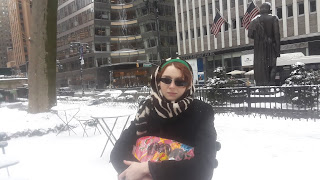





















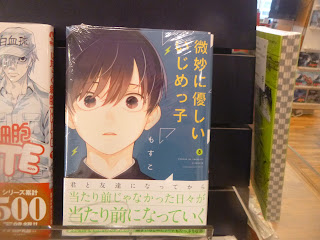

































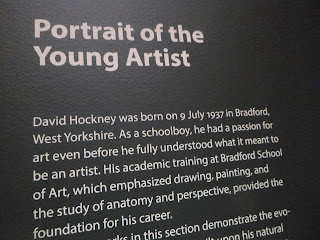














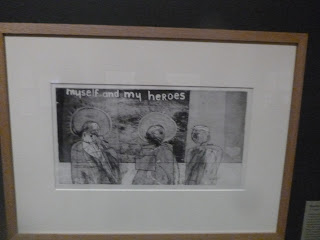
























































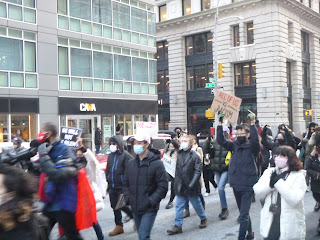

























No comments:
Post a Comment